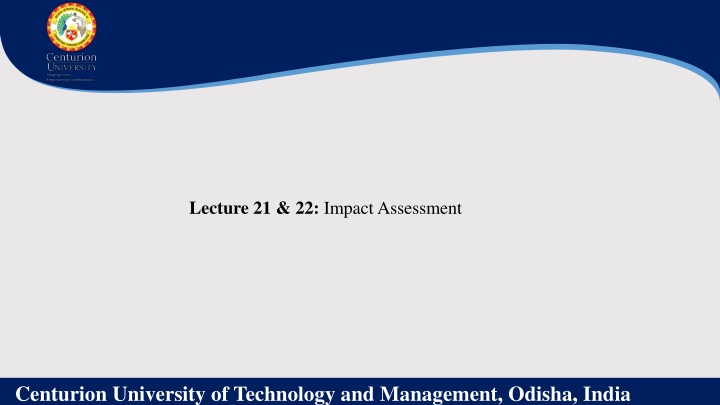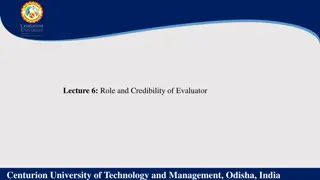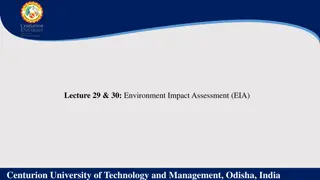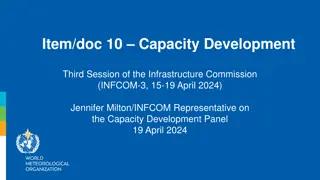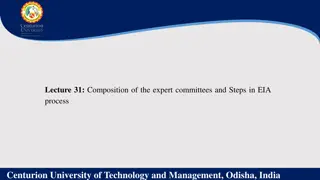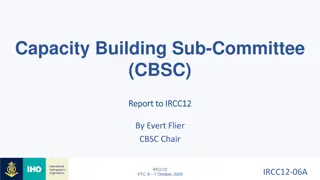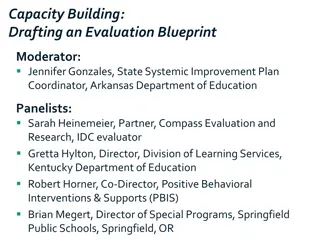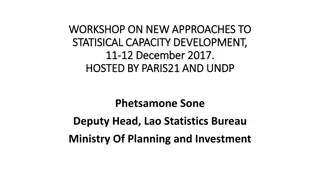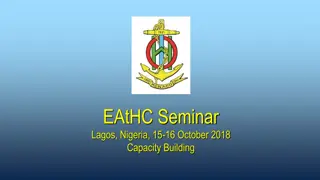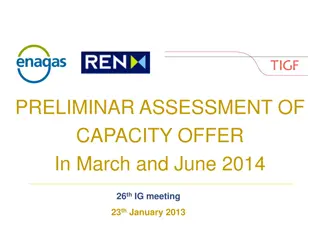Impact Assessment in Training and Capacity Building at Centurion University
Impact assessment in training is crucial for enhancing the efficiency of individuals and organizations. It involves formative and summative evaluations to determine the effectiveness of training interventions. Factors like benchmarks, inputs, outputs, outcomes, and impacts are considered to evaluate the success and relevance of training programs. Centurion University in Odisha, India, emphasizes the importance of assessing the impact of training on various levels to drive positive change.
Download Presentation

Please find below an Image/Link to download the presentation.
The content on the website is provided AS IS for your information and personal use only. It may not be sold, licensed, or shared on other websites without obtaining consent from the author.If you encounter any issues during the download, it is possible that the publisher has removed the file from their server.
You are allowed to download the files provided on this website for personal or commercial use, subject to the condition that they are used lawfully. All files are the property of their respective owners.
The content on the website is provided AS IS for your information and personal use only. It may not be sold, licensed, or shared on other websites without obtaining consent from the author.
E N D
Presentation Transcript
Lecture 21 & 22: Impact Assessment Centurion University of Technology and Management, Odisha, India
Impact Assessment Training and capacity building are important aspects of development. They produce an indirect but effective impact on the efficiency of an individual as well as an organization. However, a lot depends on the quality of training. Therefore, assessment of the impact of training is essential for bringing improvement in training input, process, and output. Impact assessment of training is a tool that gathers and organizes information so that firm inferences can be drawn and decisions can be made about what needs to be done in the workplace to enhance the impact of the training on day-to-day work behaviour and attitudes of the employees. The assessment process uses personal interviews and questionnaires to determine whether training has produced a desired effect. Centurion University of Technology and Management, Odisha, India
Formative evaluation: pre-testing of material and management monitoring survey. Summative evaluation: information recall and impact survey, for which data/information from the target beneficiaries are collected. Impact assessment of training assesses the extent to which the learning process has made a difference in some targeted area, such as in the development of the production process, or at a community level, or targeted groups, or beneficiaries of an intervention project. The basic organizing principle of any good assessment of a training intervention is to ask the question: what would have happened in the absence of the training intervention? What would have been the development levels of particular organization, communities, groups, households, and individuals, or target level without the training intervention? Evaluation involves an analysis of cause and effect in order to identify impacts that can be traced back to the training interventions. Centurion University of Technology and Management, Odisha, India
Benchmark: A benchmark is a point of real reference for measuring change in performance vis--vis agreed targets. It is intended to indicate where one is at a given point in a process so that change can be measured and progress evaluated at later stages. Defining a benchmark requires that we identify the relevant indicators against which we want to assess progress. Inputs: An input is a contribution to a development intervention (e.g., a project, programme or policy) which is intended to steer the process of this intervention towards a specified goal. Inputs can be material and non- material, including human resources (staffing), physical and/or monetary resources as well as ideas, knowledge, skill, information, and training. Outputs: Outputs are the products or results from specified inputs. For example, a typical output in a capacity building intervention could be a series of training workshops. Centurion University of Technology and Management, Odisha, India
Outcomes: Outcomes are the consequences of specified outputs. For example, a typical outcome of a series of training workshops (a capacity building output) should be that workshop participants are familiar with the set of skills that were communicated during these workshops. Impact: An impact is the wider consequence of a given set of actions or processes. Impacts can be experienced at the individual or the organizational level, are often multi-dimensional and can be intended or unintended. Attempts can be made to monitor impacts using a qualitative and quantitative baseline and accompanying indicators. Impact Assessment: In general, impact assessment consists of measuring outcomes. More specifically, it is the measurement of short or medium term developmental changes resulting from an intervention or input. Centurion University of Technology and Management, Odisha, India
